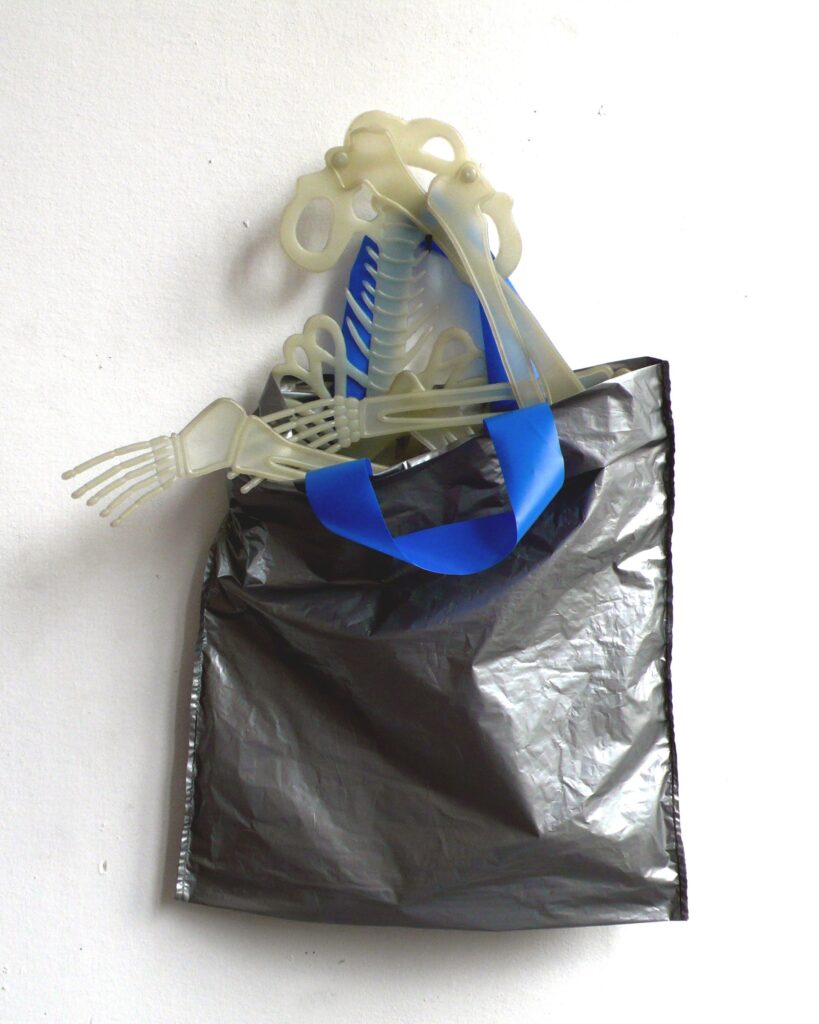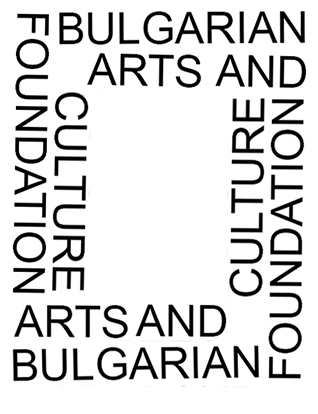Daniela Radeva
This text does not offer ways to win the world, but some probable reasons why it did not happen quickly, glamorously and sensationally enough. As a typical Bulgarian, I prefer to seek responsibility from no longer existing institutions and dominations that have weighed on our culture in the past, assuming that many of the reasons for our relative isolation are rooted in the hereditary baggage of the artistic community.
It cannot be said that today's contemporary art from Bulgaria is completely unknown and excluded from world collections, but it can certainly be said that not much is being done in Bulgaria for its visibility abroad. The realization that such visibility will not appear by itself, and that one must work for it, dates back perhaps only to the beginning of the 1990s. In an article from 1990, Georgi Todorov dreams of the future existence of an information center that would become a permanent embassy of world art in our country [1]. In general, in our periodicals and art columns, immediately after the changes, the amount of texts about foreign art suddenly swelled, after decades before that information about the art world was either missing or manipulated. One cannot even talk about news, what is reported has long ceased to be news.
Since the late 1960s, the state's initiatives to present our art abroad have been expressed in the activities of the "Foreign Trade Enterprise (FTE) "Hemus", which organized participation in various international art fairs [2]. It is not clear whether the responsibility for participation in representative exhibitions fell on the same company or on another institution. In any case, it did not come to representing the country at the Venice Biennale, a problem that is sufficiently overexposed nowadays to be commented on here. The idea that it is precisely a "commercial enterprise" that should choose how and with what to present ourselves can be commented on through a diplomatic comment by Robert Horwitz on his impressions of art in Bulgaria in the late 1970s:
The works of many American artists bear a strong resemblance to the works I encountered here, and the general American public would probably find much of Bulgarian art more accessible than the art of American avant-garde artists. [3]
In 1979, Horwitz participated in the organization of the exhibition "The Artist at Work in America" at the initiative of the US Embassy, a precedent for its time, presenting names such as Pollock, Stella, Rauschenberg, Warhol, etc. in Sofia and Varna. On this occasion, the magazine "Izkustvo" published an article in which Horwitz reflected on the differences between America and Bulgaria, his main idea being that the avant-garde in America was possible because the artists did not take into account the taste of the masses and also because of the lack of a long cultural tradition - an elegant criticism of our artistic mentality. The fixation on the past and traditions in our country for decades goes hand in hand with a worship of the "original". Kuker costumes and Trojan pans, dragons, samodives and church kitsch (sometimes even today) mark art as "native" and serve to compensate for the lack of authorial individuality. In 1997. In a travelogue about Bulgaria, Christopher Phillips notes:
What I saw largely confirmed the observation of Leon Trotsky, who had come to know Sofia as a war correspondent during the Balkan Wars of 1912-1913. Bulgaria, he wrote, because of centuries spent under the rule of the Byzantine and Ottoman empires, had historically been “forced to assimilate the ready-made cultural products” of others rather than freely developing its own forms.”
Later in the same article he makes a mocking comment about
the exaggerated hopes and fears that are traditionally aroused by the presence of unpredictable “foreign forces” in Bulgaria. [4]
Simultaneously "hopes and fears" - how to win the world without having clarified our attitude to its influences. The concept of "original" also means homegrown, isolated and untouched by knowledge, and during the socialist era was associated with the problem of quoting. To quote foreign authors, styles, movements or cultures was understood as a sign of that "forced assimilation", not so much as knowledge and interpretation. It is no coincidence that much of the energy of the 1990s went into projects engaged in healing artistic trauma, such as the exhibition "The End of the Quotation" [5] from 1990. Its ironic idea was to finally remove the stigma from quoting, symbolically "opening the quotation marks" in the words of the exhibition's curator, Lachezar Boyadzhiev, who also notes: "One could say that quoting is an honorable way of bringing something foreign into one's own or something domestic into something foreign." [6]
If it is not totally innovative, one of the main arguments for a work to be "imported" into a foreign collection is that it can correspond, that it can be arranged in an exhibition, or, according to the cliché, that it is "adequate to the context". During the transition, the Bulgarian art community finds itself between the past decades of attempts to affirm its "native" physiognomy and the need to catch up and enter the universal tone, means of expression and visual language of international contemporary times.
Again with a mission to stimulate the self-awareness of the local community, some artistic projects from the 1990s dealt with rethinking the concept of “national” [7] and expanding its boundaries to the idea of a Balkan artistic society. Such an initiative, set out in the “Balkan Unifying Conference” [8], remained without serious development thereafter, but would have had the potential to expand the boundaries of the idea of “our own” at the expense of “the foreign”.
If we feel offended that we are not invited, perhaps we should first ask ourselves who and when we invited. A remarkable event, but a strange exception to the usual flow of exhibitions, remains to this day the exhibition “Place/Interest” from 1999. [9] Moreover, it was only in 2015, at the initiative of Maria Vasileva, that an exhibition of Christo and Jeanne-Claude was held in an institution and with the personal support and blessing of Christo [10]. These examples are among the few when the invitation was tailored to what the audience here absolutely needs to see, and not for other, political or economic considerations. I also point them out for comparison with the visiting foreign exhibitions from the time before the changes, mainly from “brotherly” socialist countries. The logic of choosing whom to invite at that time was colorfully interpreted by Lachezar Boyadzhiev on the occasion of the “Fourth International Youth Competition for Painters”:
If I forget that I have been abroad, the only reality that foreign contemporary art has for me is the reality of reproduction – in books, in albums, in magazines. I cannot free myself from the suspicion that the paintings from abroad that I see at exhibitions such as the International Competition for Young Painters were produced in the offices of the international departments of the Union of Bulgarian Artists and the Committee for Culture. I suspect that in the periods between two competitions they are carefully hidden in some repository. During this time they are presented to me in the form of reproductions. I even suspect that the foreign magazines themselves are produced here and in fact there is no real foreignness in art. The foreign guest artists that are shown to me are just bodies speaking a foreign language, who could easily have been graduates of some special schools of the VI Department.
In general, the artistic foreign world that is shown to me at international exhibitions in our country seems suspiciously ours [11].
[1] Todorov, G., The White Fields, Pulse newspaper, issue 11, March 13, 1990.
[2] Based on information from Petrov, P. V., Art and Power in Bulgaria in the 1970s, St. Kliment Ohridski University, 2021.
[3] Horwitz, R. (artist, curator of the exhibition "The Artist at Work in America"), On the Ways of Perceiving Contemporary Art in America and Bulgaria, Vol. I, 1980, 3
[4] Phillips, K., A View from the Lower East Side of Europe, Kultura, Issue 42 (2266), October 24, 1997
[5] Exhibition "End of the Quote", April-May 1990, Sofia University (north wing), Shipka Street, Sofia.
[6] Boyadzhiev, L., Quote from the pretext, Kultura newspaper, Issue 31, August 3, 1990.
[7] For example, the exhibition “Ars ex natio. Made in Bulgaria”, Plovdiv – Old Town, 1997. Curators: Maria Vasileva, Yara Bubnova
[8] "Balkan Unifier Conference", initiative of ISI-Sofia, "Rimskata Stena" Inn, Sofia, 2004.
[9]“LocallyInterested”, Douglas Gordon, Peter Kogler, Oleg Kulik, Pipilotti Rist, Nedko Solakov, Rirkrit Tiravanija, Uri Tzaig, curator Yara Bubnova, based on the idea of Nedko Solakov, National Center for Cultural Heritage, Sofia, 1999.
[10]“Christo and Jeanne-Claude: Graphics and Objects 1963-2014”, curator Maria Vasileva, Sofia City Art Gallery, 2025.
[11] Boyadzhiev, L., Fourth International Youth Competition for Painters, Art Magazine, 1990, issue 4

Rada Bukova, Luggage, 2010
plastic, 40x30x10 cm
Collection at SGHG
Rada Boukova, Luggage, 2010
plastic, 40x30x10 cm
Sofia City Art Gallery Collection
